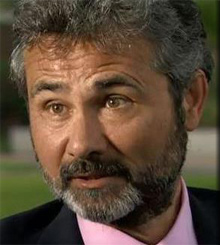Property
THIS ARCHIVE PAGE IS UPDATED ONLY TO 2004
When I joined Boots in 1991, under Finance Director David Thompson, it was developing a rigorous framework for decision making to maximise the after-tax value of the Company."It was a framework that was not based on seniority or who could shout loudest or what people had done previously." (FT interview March 2003)
The Treasury team, led by Michael Bunting, had the freedom to apply corporate finance concepts to practical issues of strategy & financial policy. A guiding principle that we could not "outguess the financial markets", and a willingness to be different, gave us a clear focus. See my Risk magazine artices on hedging in 1994 & 1996.
Before starting work on pensions in Autumn 1997 we had already developed a robust framework for property leases, very important for Boots, since property is the major asset for any retailer. Without this earlier work we would have achieved much less on pensions.
The economic approach to property leases is simple. Signing a long term property lease represents a major capital investment and a major liability for the retailer. Current accounting does not recognise this capital investment, it overstates economic profit and thus encourages retailers to make investment decisions which destroy value.
Understanding the real economics of retailing had a huge practical impact at Boots. It moved the retail businesses to shorter leases and break options and led to the sale of economically unprofitable retail subsidiaries. It also led to buying Group-occupied freeholds, to withdrawing from property development and the disposal of major investment properties.
We explained our approach in the Annual Report and from 1999 Boots disclosed the value of capitalised property leases (See 2001 disclosure). The rental commitment of £200m capitalised at £1,325m, excluding rental growth over the lease. (The Boots' internal model included rental growth).
Since property leases are the economic equivalent of predominantly fixed-rate debt, we sought to swap some of this into floating. We did the first £100m 10 year interest rate swap in 1994 and by March 2000 this amount was up to £1.1bn, as part of a regular mechanical programme.
The ASB recognises that the current accounting for leases does not reflect their underlying economics and in late 1999 produced a Discussion Paper "Leases: Implementation of a New Approach".
The recommended approach was a huge step forward and the Boots' response was very supportive. See also my presentation at the Investment Property Forum in February 2000.
Neither the ASB or IASB has produced anything definitive since 1999.





